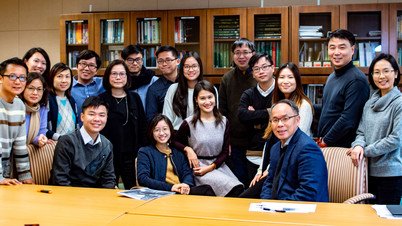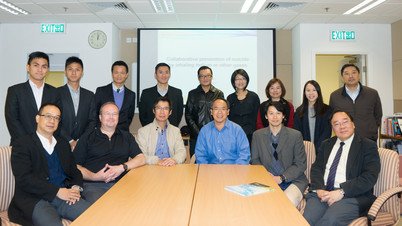Changing Media Culture to Reduce Suicide Rates
Media is a double-edged sword.
Seeking to change an entire culture of media reporting is certainly an ambitious challenge, but that is what Professor Paul Siu Fai Yip, Director of the Hong Kong Jockey Club Centre for Suicide Research and Prevention, succeeded in doing. The impact has been nothing short of phenomenal: between 2003 and 2015, the change of media reporting has contributed to the reduction of Hong Kong’s suicide rate fell by more than 30 percent from 18.6 to 12.0 per 100,000, exceeding a target set by the World Health Organization to cut rates by 10 percent over a ten-year period.
The campaign was based on recognition of the media’s key role in affecting suicide rates, a foundation stone built on research conducted by Professor Yip and his team. They found that local media in Hong Kong reported suicides frequently and selectively, and often oversimplified the circumstances surrounding a suicide.
“Sensationalism can potentially effect the emotionally unstable,” said Professor Yip. “We needed to convince reporters with evidence that actually, you’re doing harm.”
Their research also found that strong parallels existed between the style of local media reporting on suicide and subsequent suicide rates. Prominent reporting of the suicide of a celebrity, for instance, correlated with a significant increase in suicide rates immediately afterwards, and sensationalised reports about new suicide methods, such as charcoal burning, saw increased use of the same method not only in Hong Kong but also in other parts of Asia which has accounted for more than 50,000 deaths so far.
A long-term knowledge exchange project was launched in 2014 to engage local media and to share updated and expanded recommendations and share information and resources online. The results were visible removals and reductions in problematic reporting, such as Next Media removing animations from their website that showed suicide methods – which would otherwise have been seen by more than 1.5 million viewers— and deleting information from its website about a HKU student suicide case. The intensity of stories focusing on student suicides fell sharply by 40% between September 2013 and December 2016. Over the same period, a substantial increase was seen in the number of positive stories that showed alternatives to suicide when facing stress and life difficulties in a move to balance negative reporting.
The impact of change has been global: YouTube removed animations about helium suicides that could have been accessed by billions of viewers, while Google now automatically displays suicide prevention hotline numbers when searches are made for suicide-related keywords in Hong Kong, Taiwan and Mainland China.
Professor Yip also brought media professionals on board in his ongoing campaign to prevent suicides, for example convincing Next Digital to create a prevention animation to encourage parents to increase their support to distressed children, which has been viewed 150 times.
As well as appealing to journalists’ sense of social responsibility and pointing out the impact of their work, the media was also offered support such as recommendations on how to report more appropriately, and offering access to experts on suicide for researching their stories. “Now we are friends, they ask for our advice,” Professor Yip explained.
Beyond the media, Professor Yip and his team have worked with the Fire Services Department and medical professionals to restrict the spread of helium suicides by increasing surveillance and banning helium balloons in MTR stations and warning about the dangers of helium gas. Professor Yip said the police have been very important in achieving results by doing detailed death investigations. “They facilitate our research,” he said.
The effects of the campaign are still growing with the Committee on Prevention of Student Suicides, which Professor Yip heads by government appointment, setting up a media sub-group to build on his suicide prevention work, and the Education Bureau has committed to following up on further engaging with media.
Professor Paul Siu Fai Yip and his team members, Dr Yik Wa Law and Dr Qijin Cheng, of the Hong Kong Jockey Club Centre for Suicide Research and Prevention received the University’s KE Excellence Award 2017 for the project ‘Public Health Approach to Suicide Prevention’.



